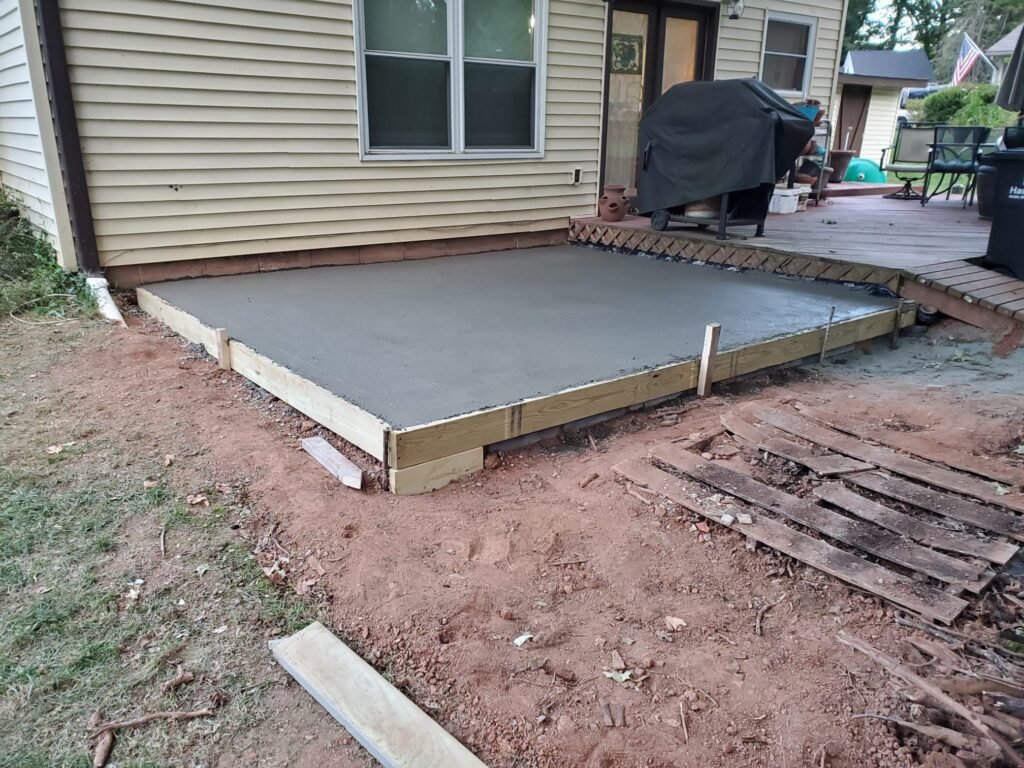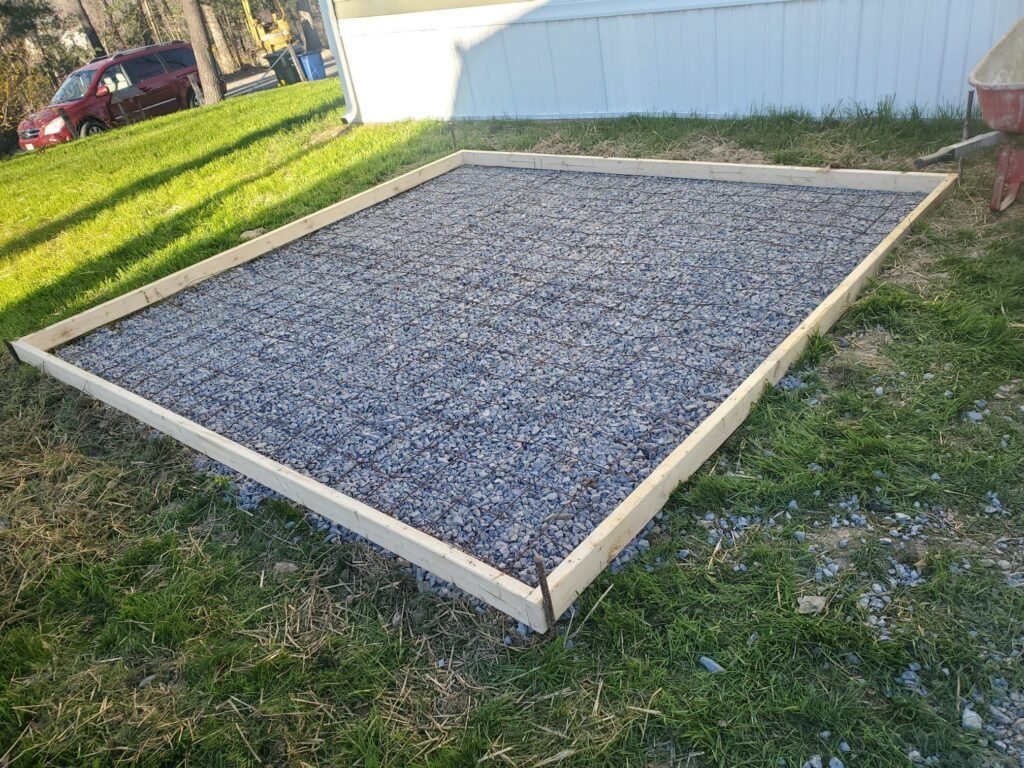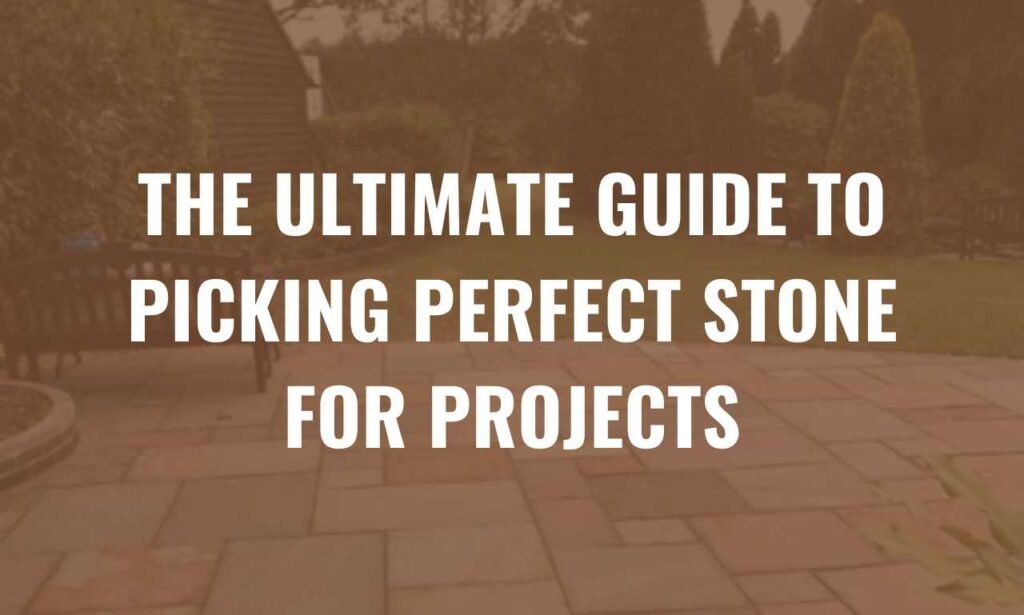Choosing the right stone for your project depends on the stone’s durability, aesthetics, and suitability for the intended use. Consider factors like cost, maintenance, and environmental impact.
Selecting the perfect stone can make or break your project. Each type of stone has unique properties and benefits. Granite, marble, limestone, and quartz offer different aesthetics and durability. Granite is known for its strength and resistance to scratches, making it ideal for high-traffic areas.
Marble provides a luxurious look but requires more maintenance. Limestone offers a rustic charm but is less durable. Quartz is non-porous and low-maintenance. Evaluating these factors ensures you choose the best stone for your needs. Researching thoroughly helps you make an informed decision, ensuring a successful and visually appealing project.
Introduction To Stone Selection
Choosing the right stone for your project can be a daunting task. There are many types of stones, each with its own properties. The right stone can make your project stunning and durable. This guide will help you make an informed decision.
Importance In Architecture
Stone has been a key material in architecture for centuries. It offers both beauty and durability. Structures made of stone can last for generations. Stone also provides a natural and elegant look to buildings.
Factors To Consider
When selecting a stone, consider the following factors:
- Durability: Ensure the stone can withstand weather and time.
- Color: Choose a color that complements your design.
- Texture: The texture should match the project’s aesthetic.
- Cost: Make sure the stone fits your budget.
Here is a table to summarize these factors:
| Factor | Description |
|---|---|
| Durability | Ability to resist wear and tear |
| Color | Should match your design |
| Texture | Must fit the project’s aesthetic |
| Cost | Should be within your budget |
Types Of Stones Used In Construction
Choosing the right stone for your construction project is crucial. Different stones have unique qualities and uses. Understanding these types will help you make the best decision for your needs.
Granite
Granite is one of the most durable stones available. It’s known for its hardness and resistance to wear and tear. This makes it an excellent choice for kitchen countertops and flooring. Granite comes in various colors and patterns. It adds a luxurious feel to any space.
Marble
Marble is famous for its elegant look and smooth texture. It’s often used in bathrooms, living rooms, and entryways. Marble is softer than granite, so it needs regular maintenance. It can stain easily, so it’s best to seal it properly.
Limestone
Limestone is a versatile stone that can be used both indoors and outdoors. It’s known for its natural, earthy colors. Limestone is softer and more porous than granite and marble. It requires sealing to prevent stains and water damage. This stone is often used for flooring, walls, and garden paths.
Slate
Slate is a fine-grained, durable stone. It’s perfect for roofing and flooring. Slate is resistant to water and temperature changes. It comes in a range of colors, from black to green and purple. This makes it ideal for various design styles.
Physical Properties Affecting Stone Choice
Choosing the right stone for your project can be tricky. Understanding the physical properties of stone helps you make a wise choice. Here are the key properties you need to consider:
Durability
Durability is the stone’s ability to withstand wear and tear. Stones like granite and basalt are very durable. They can last for years without much damage. Softer stones like limestone may wear out faster. Choose a durable stone for high-traffic areas.
Porosity
Porosity measures how much water a stone can absorb. Stones with high porosity can stain easily. For example, sandstone is very porous. Non-porous stones like slate are better for wet areas. Always seal porous stones to protect them.
Density
Density refers to how compact a stone is. Dense stones like marble are very strong. They are less likely to crack under pressure. Lightweight stones like pumice are less dense. Use dense stones for structural projects.
Strength
Strength is the stone’s ability to bear weight. Granite has high strength, making it ideal for countertops. Softer stones like soapstone have lower strength. Choose strong stones for load-bearing structures.
Aesthetic Considerations
Choosing the right stone for your project involves many factors. One of the most critical is aesthetics. The appearance of the stone can greatly influence the overall look of your space. This guide will help you understand the key aesthetic considerations when selecting a stone.
Color Variations
Stones come in a wide range of colors. Each type of stone has its unique palette. For example, granite can be found in shades of black, white, pink, and green. Marble often features white, grey, and black hues. Consider the color scheme of your project. Ensure the stone color complements your design. Matching the stone color with other elements like furniture and paint can create a harmonious look.
Veining And Patterns
The natural veining and patterns in the stone add character. Marble is famous for its dramatic veins. Granite often has speckled patterns. Examine the stone closely. Look for patterns that appeal to you. Some prefer bold, striking veins. Others may like subtle, understated patterns. The choice of veining and patterns can set the tone for your space.
Finish And Texture
Stones can have different finishes and textures. These aspects affect both the look and feel of the stone. Common finishes include polished, honed, and brushed.
| Finish Type | Description |
|---|---|
| Polished | Glossy and reflective. Enhances color and pattern. |
| Honed | Smooth but not shiny. Gives a matte look. |
| Brushed | Textured surface. Adds a rustic feel. |
Choose a finish that suits the purpose of the stone. A polished finish is great for countertops. A honed finish works well for floors. Brushed finishes can add warmth to outdoor spaces.
Practical Application In Design
The right stone can transform any space. Knowing how to use it effectively is crucial. This guide will help you understand the practical applications in design.
Flooring Solutions
Stone flooring brings elegance and durability. It’s ideal for high-traffic areas. Marble and granite are popular choices. They offer unmatched beauty and strength.
| Stone Type | Benefits |
|---|---|
| Marble | Luxurious, timeless, and available in many colors |
| Granite | Very durable, scratch-resistant, and heat-resistant |
| Limestone | Soft, warm, and available in neutral tones |
Wall Cladding
Stone wall cladding adds texture and depth. It enhances both interior and exterior walls. Slate and sandstone are great for this purpose. They provide a natural, rustic look.
- Slate: Offers a natural, rugged appearance.
- Sandstone: Easy to work with and versatile.
- Travertine: Has a unique, pitted surface.
Countertops And Vanities
Stone countertops are a top choice for kitchens and bathrooms. They are strong and beautiful. Quartz and marble are popular options.
- Quartz: Non-porous, easy to maintain, and available in many colors.
- Marble: Provides a luxurious and elegant look.
- Granite: Very durable and heat-resistant.
Choosing the right stone for your project can enhance your design. Think about the specific needs of each area. Make sure to pick the best stone to meet those needs.

Sourcing And Sustainability
Choosing the right stone for your project is crucial. It’s not just about aesthetics. Sourcing and sustainability play a significant role in the selection process. Understanding where your stone comes from and how it’s quarried can make a difference. It impacts the environment and your project’s overall footprint.
Ethical Quarrying
Ethical quarrying means sourcing stone from quarries that follow responsible practices. These practices include fair labor conditions and minimizing environmental impact. Look for certifications that indicate ethical practices. These certifications ensure that the stone is quarried responsibly.
Key certifications to look for include:
- Fair Stone Certification
- Rainforest Alliance Certification
- LEED Certification
Supporting ethical quarrying helps protect ecosystems. It also ensures that workers are treated fairly.
Recycled Stone Options
Recycled stone is a sustainable choice. It involves reusing stone from old buildings or structures. This reduces waste and lowers the demand for new quarrying.
Benefits of using recycled stone:
- Reduces environmental impact
- Preserves natural resources
- Offers unique aesthetics
Recycled stone can be just as durable and beautiful as new stone. It also adds a unique character to your project.
Local Vs. Imported
Deciding between local and imported stone involves several factors. Local stone usually has a smaller carbon footprint. This is due to reduced transportation distances. It also supports local businesses and economies.
Pros of using local stone:
- Lower transportation costs
- Supports local quarries
- Smaller carbon footprint
Imported stone can offer more variety. It might have unique characteristics not found locally. Weighing these pros and cons will help you make the best choice for your project.
Installation And Maintenance
Choosing the right stone is just the first step. Proper installation and maintenance are crucial to ensure your stone project looks great and lasts long. This section will guide you through the essential steps for installing, sealing, and maintaining your stone surfaces.
Proper Installation Techniques
Proper installation techniques are vital for a durable stone project. Always begin with a solid foundation. Ensure the surface is clean, dry, and level.
- Use the right adhesive: Different stones require specific adhesives. Follow manufacturer recommendations.
- Ensure proper alignment: Check that stones are aligned correctly. Use spacers if necessary.
- Allow for expansion: Stones can expand and contract. Leave small gaps between stones.
Sealing And Protection
Sealing your stone is essential to protect it from stains and damage. Some stones are more porous and need extra care.
- Choose the right sealer: Match the sealer to your stone type. Read labels carefully.
- Apply evenly: Use a clean, soft cloth or a roller. Apply in a thin, even coat.
- Reapply as needed: Over time, sealers wear off. Reapply every 1-2 years for best protection.
Cleaning And Care
Regular cleaning and care keep your stone looking new. Avoid harsh chemicals that can damage the surface.
- Use a soft cloth: Wipe surfaces with a damp, soft cloth. Avoid abrasive pads.
- Mild soap solution: Mix mild soap with water. Clean gently to remove dirt.
- Dry thoroughly: Always dry the surface after cleaning. Prevent water spots and streaks.
| Stone Type | Sealer Type | Cleaning Solution |
|---|---|---|
| Granite | Penetrating Sealer | Mild Soap & Water |
| Marble | Topical Sealer | pH-neutral Cleaner |
| Limestone | Impregnating Sealer | Stone-specific Cleaner |
Budgeting And Cost
Choosing the right stone for your project involves many factors, with budgeting and cost being key considerations. Understanding the price range of different stones and their long-term investment value can help you make an informed decision.
Price Range Of Different Stones
The cost of stones varies widely, influenced by type, quality, and source. Here’s a quick guide:
| Stone Type | Price per Square Foot (USD) |
|---|---|
| Granite | $50 – $100 |
| Marble | $60 – $150 |
| Quartz | $70 – $200 |
| Limestone | $30 – $70 |
| Slate | $20 – $50 |
Granite is a popular choice due to its balance of cost and durability. Marble offers timeless elegance but comes at a higher price. Quartz is engineered, offering a wide range of designs and a higher price tag. Limestone and slate are more budget-friendly options but may require more maintenance.
Long-term Investment Value
Investing in the right stone can save money over time. Consider these points:
- Durability: Stones like granite and quartz resist wear and tear, reducing replacement costs.
- Maintenance: Marble requires sealing and polishing, adding to long-term costs. Quartz needs less maintenance.
- Resale Value: High-quality stones can increase your property’s market value. Potential buyers often seek durable and attractive materials.
When choosing a stone, balance initial costs with long-term benefits. A higher upfront investment in materials like granite or quartz can lead to lower maintenance costs and higher property value.
Case Studies
Choosing the right stone for your project can be challenging. To help you, we have gathered some case studies. They showcase successful applications in various settings. These examples will give you practical insights and inspiration.
Residential Projects
For homes, stone choice affects aesthetics and durability. Many homeowners prefer granite for kitchen countertops. It is both beautiful and scratch-resistant. Another popular choice is limestone for outdoor patios. It has a natural look that blends with gardens.
| Project | Stone Used | Benefits |
|---|---|---|
| Kitchen Remodel | Granite | Durable, Heat-resistant |
| Backyard Patio | Limestone | Natural Look, Slip-resistant |
Commercial Projects
In commercial spaces, stone choice impacts functionality and style. Marble is often used in hotel lobbies for its luxurious look. It creates a grand impression on visitors. Slate is another option for office floors. It is durable and easy to clean.
- Hotel Lobby: Marble – Elegant, Timeless
- Office Flooring: Slate – Low Maintenance, Durable
Landmark Restorations
For landmark restorations, stone choice must match historical accuracy and longevity. Sandstone is commonly used in restoring old buildings. It has been used in many historic constructions. Travertine is another choice for restoring ancient structures. It offers a classic look that stands the test of time.
- Historic Building Restoration: Sandstone – Historically Accurate, Durable
- Ancient Structure Restoration: Travertine – Classic, Long-lasting
Each case study highlights the importance of choosing the right stone. It impacts the project’s success. Make informed decisions to achieve the best results.

Future Trends In Stone Usage
Choosing the right stone for your project can be daunting. With new trends emerging, it becomes even more complex. Understanding future trends in stone usage can help you make informed decisions. This guide explores innovations in stone fabrication and emerging design trends.
Innovations In Stone Fabrication
Innovations in stone fabrication are revolutionizing the industry. Advanced technology allows for precise cuts and intricate designs. Water jet cutting is one such innovation. It uses high-pressure water to cut stones with extreme accuracy. This method reduces waste and saves time.
Another groundbreaking technique is computer numerical control (CNC) machining. CNC machines automate the cutting process. They deliver consistent and high-quality results. Laser engraving is also gaining popularity. It allows for detailed patterns and textures on stone surfaces.
These innovations make stone more versatile. They open up new possibilities for design and application.
Emerging Design Trends
Design trends in stone usage are evolving. Sustainability is a key focus. Many projects now use reclaimed or recycled stone. This reduces environmental impact. Natural finishes are also trending. They offer a raw and organic look.
Large-format tiles are becoming popular. They create a seamless and spacious feel. Mixed materials are another trend. Combining stone with wood or metal adds texture and contrast. Bold colors and patterns are making a comeback. They add a dramatic flair to any space.
Minimalist designs continue to dominate. Clean lines and simple forms emphasize the stone’s natural beauty.
| Innovation | Description |
|---|---|
| Water Jet Cutting | Uses high-pressure water for precise cuts. |
| CNC Machining | Automates cutting for consistent results. |
| Laser Engraving | Allows detailed patterns and textures. |
- Sustainability: Using reclaimed or recycled stone.
- Natural finishes: Raw and organic look.
- Large-format tiles: Seamless and spacious feel.
- Mixed materials: Combines stone with wood or metal.
- Bold colors and patterns: Adds dramatic flair.
- Minimalist designs: Clean lines and simple forms.
Frequently Asked Questions
How Do I Choose A Natural Stone?
Choose a natural stone by considering color, durability, maintenance, cost, and source. Visit showrooms to see samples.
How To Specify A Natural Stone?
Specify the stone type, color, and finish. Include size, thickness, and edge details. Mention the desired application and budget.
How Do I Choose A Stone Countertop?
Choose a stone countertop by considering durability, cost, maintenance, color, and style. Visit showrooms to see samples.
What Factors To Consider When Choosing Stone?
Consider durability, aesthetics, and maintenance. Match the stone type with your project’s requirements. Evaluate cost and long-term value.
Conclusion
Choosing the right stone can transform your project. Consider your needs, budget, and style preferences. Research and compare options carefully. The right stone adds beauty, durability, and value. Your project deserves the best foundation. Make informed decisions for lasting satisfaction.
Use this guide to ensure a successful outcome.






